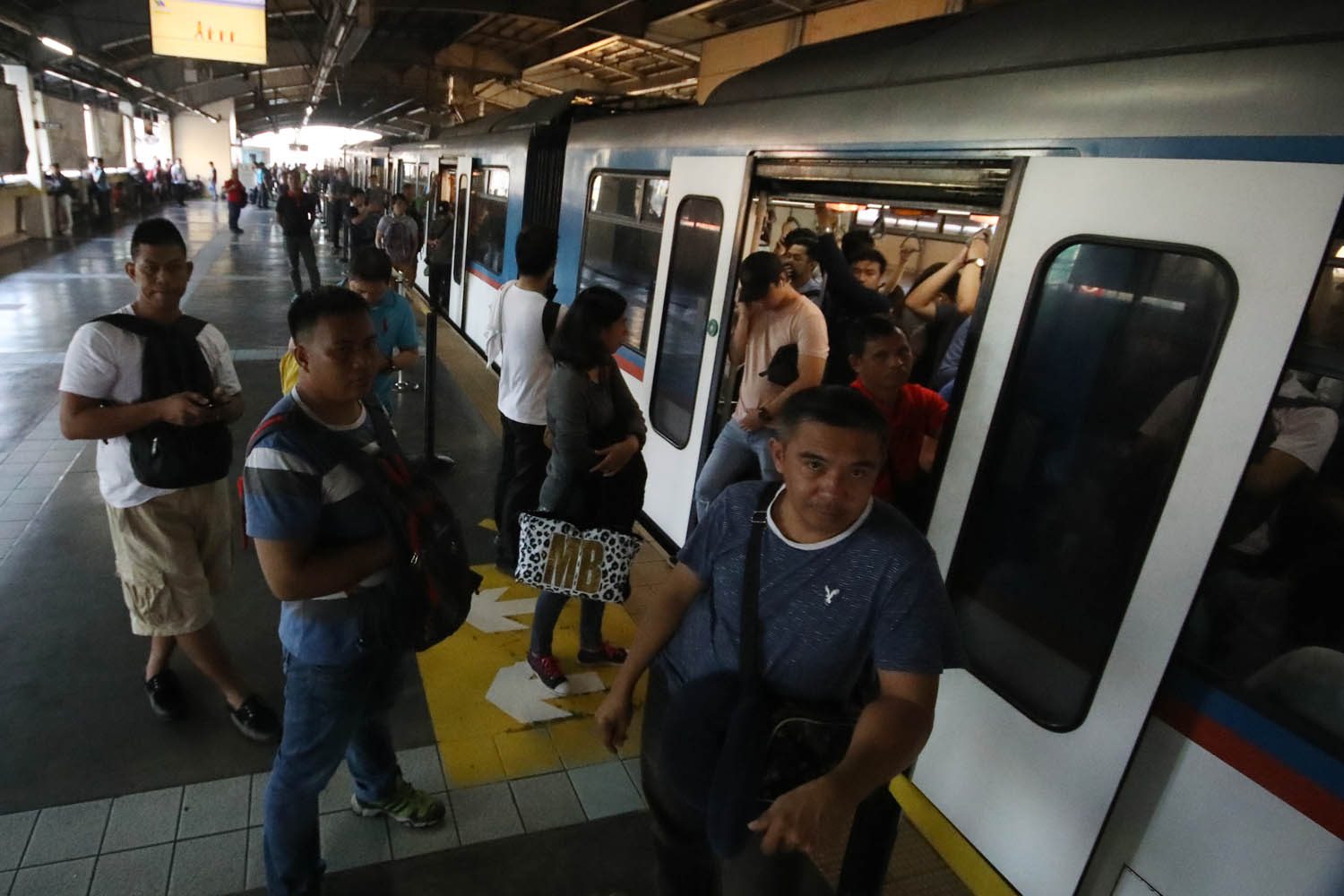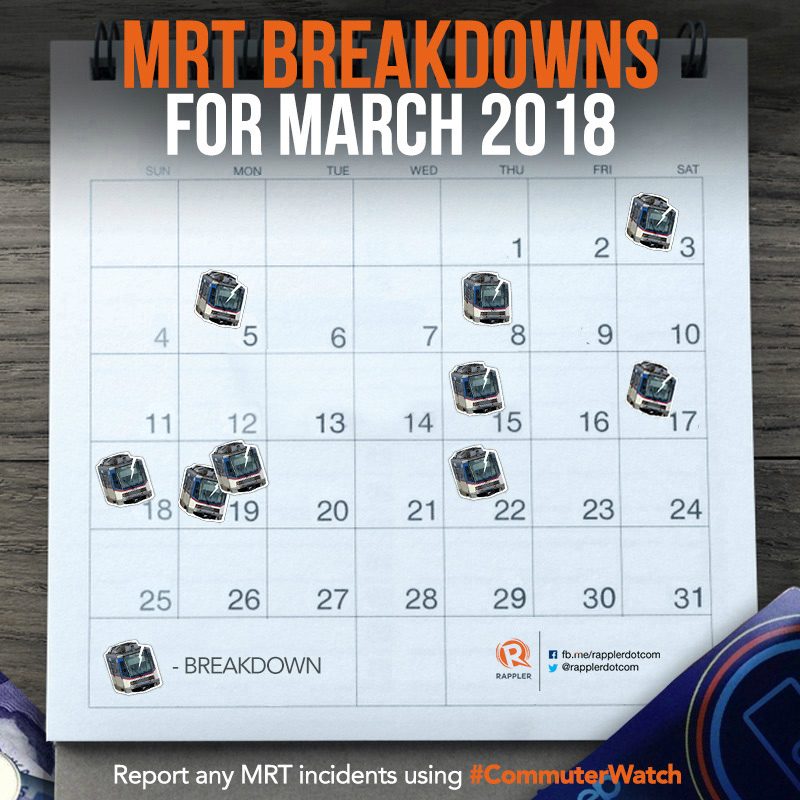SUMMARY
This is AI generated summarization, which may have errors. For context, always refer to the full article.

MANILA, Philippines – The Metro Rail Transit Line 3 (MRT3) may be running on more trains now with 12 trains operating, but it broke down 5 times this week.
From March 17 to March 23, the MRT3 suffered 5 glitches – two of which were caused by electrical failure in the affected train’s motor, two due to door failure, while another was due to a signalling problem.
Transportation officials earlier attributed the increase of trains to the availability of spare parts. The glitches this week, however, is not due to lack of spare parts, MRT3 media relations officer Aly Narvaez told Rappler.
“Spare parts for rolling stock and power were delivered but electrical failure is one of the common causes of unloading,” Narvaez said in a mix of English and Filipino.
“Door failure may be caused by human intervention, when passengers lean on the door or when they force it open. It causes pressure on door components, and eventually on the motor, which results to the glitch,” she added.
There have been 9 breakdown incidents in March, or a total of 47 glitches when 2018 started, affecting some 3,000 passengers in total.
The railway system served close to 300,000 passengers daily from March 19 to March 22, about 5% increase from the first week of March ridership of only 286,000.

More glitches
On Saturday, March 17, around 340 passengers were unloaded at GMA-Kamuning Station at 5:08 pm due to electrical failure. The day averaged with 11 working trains, serving some 235,000 passengers on a Saturday.
On Sunday, March 18, the day opened with 12 running trains at 6 pm but the MRT3 suffered from a glitch in the afternoon.
At 6:49 pm, a Southbound MRT3 train unloaded around 600 passengers at Ortigas Station due to signalling error. Despite the glitch, the railway operator ran on an average of 12 trains with a ridership of 165,000 on a Sunday.
On Monday, March 19, there were 11 trains running when the week started. It experienced two glitches in the evening.
At 6:45 pm, around 740 passengers were unloaded by a Southbound MRT3 train at Shaw Boulevard Station due to electrical failure. More than an hour after, some 400 passengers got off at Magallanes Station at 8:03 pm due to door failure.
The day ended with 11 trains on average but was able to serve almost 310,000 passengers despite the glitches.
On Tuesday, March 20, 11 trains were running the entire day serving some 297,000 passengers.
On Wednesday, March 21, 11 trains were running by 6 am. It went up to 12 by 7 pm. The day closed with an average of 11 operational trains serving more than 295,000 passengers.
On Thursday, March 22, there were 12 running trains available for the commuting public by 6 am. But a glitch happened at 6:19 pm, with a Northbound MRT3 train unloading around 1,000 passengers at Buendia Station due to door failure.
On Friday, March 23, the day opened with 12 trains at 6 am. The MRT3 was able to maintain the number of trains through out the day but by 7:32 pm, there were 13 trains running.
Maintenance
The MRT3 is scheduled to conduct its maintenance services from March 28 to April 1, closing down operations on those days.
MRT3 announced on Thursday that the team is all set for the maintenance activities during the Holy Week, preparing 1,000 meters of contact wire, 100 pieces of diffusers, cans of paint for repainting of walls and signages, as well as signalling parts for the general cleaning.
The MRT3 management also said that 782 light rail vehicle tires will also be available for the annual maintenance of the trains.
Once the rehabilitation of MRT3 trains are done, the transportation department promised that 15 trains should be up and running by April. (READ: DOTr promises better MRT3 services by 2nd quarter of 2018)
Experts from the Australian Agency for International Development (AusAID) and Asian Development Bank (ADB) joint advisory panel will also join the MRT3 team during the maintenance services.
In 2017, the MRT3 has an average daily ridership of 463,000 from 20 running trains. In November 2017, this was later adjusted to 15 to ensure the safety of passengers after anomalies with former maintenance provider Busan Universal Rail Incorporated’s performance. (READ: Surviving MRT3: Worst train fails in 2017)
The number was later reduced to the available trains now to ensure passenger safety. In February 2018, the number of trains went down to as few as 6 trains. (READ: MRT3 suffers almost daily breakdowns since start of 2018)
There were 516 MRT3 glitches recorded in 2017 – almost 10 incidents a week.– Rappler.com
Add a comment
How does this make you feel?
There are no comments yet. Add your comment to start the conversation.